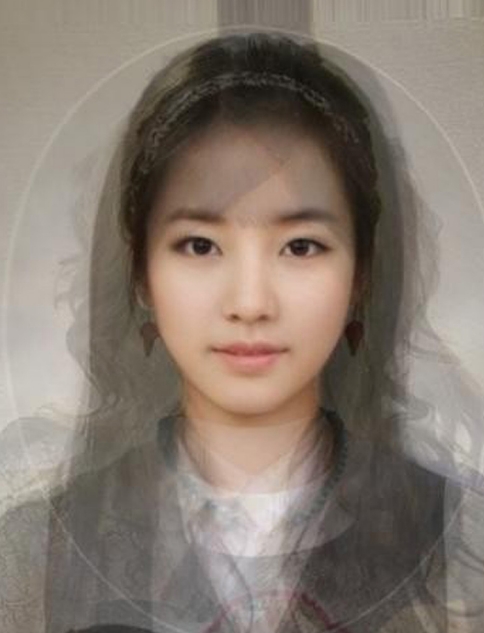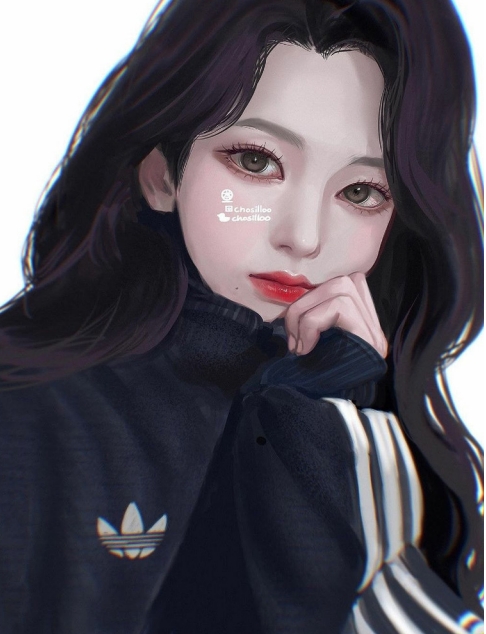 |
 |
- Search
| Arch Aesthetic Plast Surg > Volume 29(2); 2023 > Article |
|
I hold a staff lecture every week with my trainees. We recently discussed the beauties of the Joseon Dynasty (1392–1910) of Korea [1]. The beauties of that period had the following facial compositions: a round forehead, thin crescent-shaped eyebrows (a sign of wisdom and sensitivity), single long thin eyelids (longevity), a round curved nose (as a symbol of being a wise mother or good wife), small concave lips (a sign of gentleness and intelligence), and a round face (as an indicator of insight and good memory).
At the end of that lecture, we decided on the topic for the next week. As plastic surgeons, we know the old axiom, “beauty is in the eye of the beholder.” We wanted to know about the “eyes of the beholders” of all the members of our plastic surgery team [2]. Thereafter, we decided to bring the portraits of beauty we made according to our personal preferences.
At the next meeting, four trainees brought their own “portrait of a beauty.” A first-year resident modified the portrait of a Joseon beauty. He reduced the nasal width, mid-facial width, and lower facial width, and also made the chin more slender (Fig. 1). A second-year resident made a photomontage using the model Na-yeon Kim, the model Soo-joo Hong, the singer Hyun Cho, and the actress Eun-bin Park (Fig. 2). A third-year resident provided two pictures: one photomontage composed of the actresses Tae-hee Kim, Ga-in Han, Young-ae Lee, Ye-jin Son, Hye-gyo Song, and Min-jung Lee (Fig. 3), and another one composed of the singers Yoon-A, So-Bhee, Sul-li, Sandra Park, Su-ji, and Hara Goo (Fig. 4). A fourth-year resident presented a color sketch of the singer Karina (Fig. 5).
Women have been portrayed as good-natured in the cultural heritage, including paintings, of the three countries of East Asia: Korea, China, and Japan. Paintings of a beauty featuring a woman appeared in the ninth century, when a term “Imnyeo,” meaning a beautiful woman, started to be used in the history of paintings in the late period of the Tang Dynasty.
Since then, beautiful faces and graceful figures have been portrayed on various surfaces of silk, and the form of these paintings has been established in order to produce a consistent quality of paintings, making the mass production of those paintings possible [3]. From the seventeenth century on, scholars began to relax their strict attitudes and believed that love between men and women was important. They appreciated the various new styles of beauty paintings and expressed amorousness towards beauty and their own sensual desires while seeing a beautiful lady. These changing attitudes continued and strengthened during the eighteenth century when various images of the beauty, such as the lady scholar, the vernacular lady, the lascivious lady, and the naked lady in erotic images appeared. Some scholars in the nineteenth century began to be interested in the “decent” body. The decent lady of the Qing Dynasty was characterized by a slim, limber, and lethargic body. This stream of strictness and relaxation in the beauty paintings of the Joseon period is similar to the stream of thought in general literature [4].
Because beauty is characterized by an individual and subjective pleasure, plastic surgeons must synthesize classical ideas of beauty with patients’ desires, cultural nuances, and ethnic considerations, all while maintaining a natural appearance and results. From this point of view, making a portrait of an ideal beauty is a profitable experience for a plastic surgery trainee. Future plastic surgeons need special eyes as well as skillful hands.
Fig. 1.
A portrait of a beautiful woman of the Joseon Dynasty: (A) original (OCI museum, Seoul, Korea) and (B) modified.
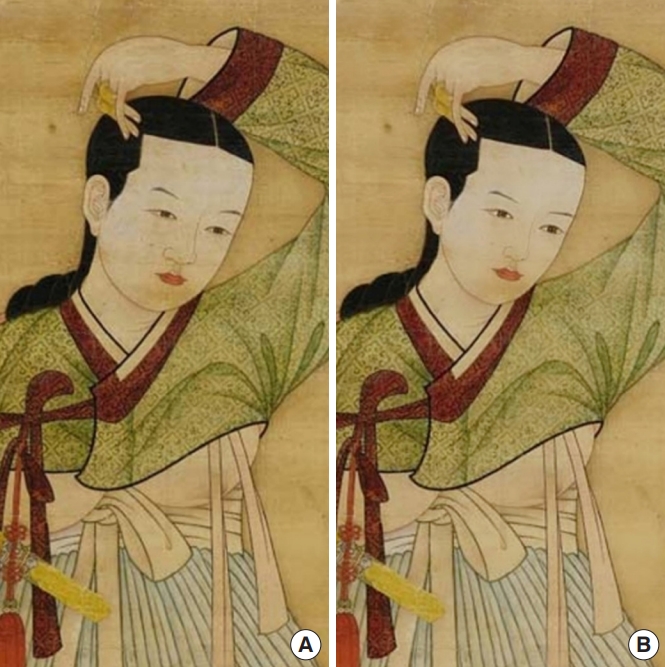
Fig. 2.
A photomontage using the model Nayeon Kim, the model Soojoo Hong, the singer Hyun Cho, and the actress Eunbin Park.
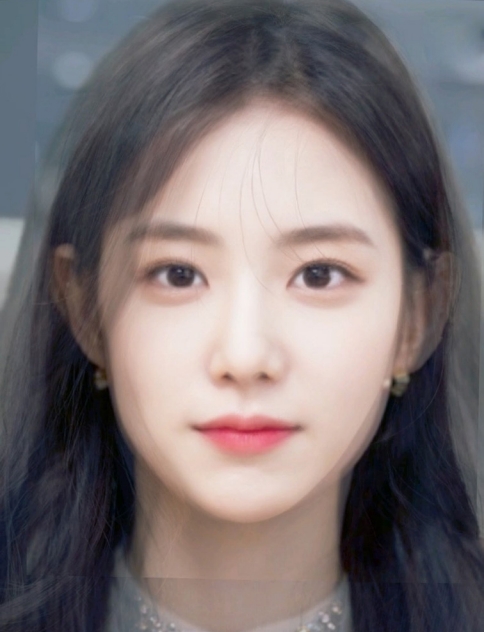
Fig. 3.
A photomontage composed of the actresses Tae-hee Kim, Ga-in Han, Young-ae Lee, Ye-jin Son, Hye-gyo Song, and Min-jung Lee.
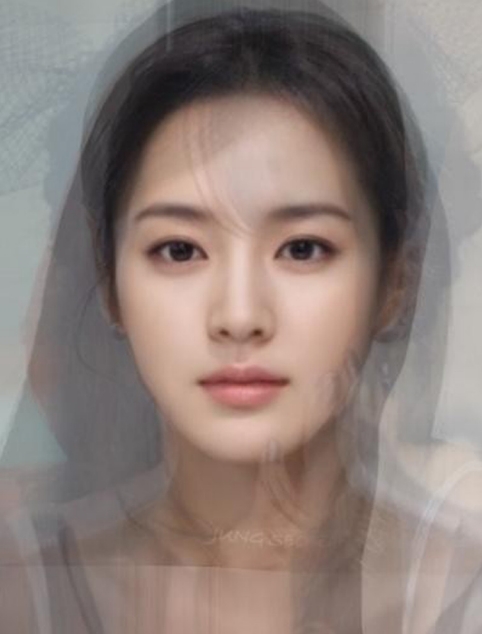
REFERENCES
1. Hwang K. How did the beauties of the Joseon Dynasty (1392-1910) of Korea look? J Craniofac Surg 2022;Jul 28 [Epub]. https://doi.org/10.1097/SCS.0000000000008834.

3. Lee ML. Appearance and background of the painting of a beauty in the modern arts: centering on the figure and the form of Korean and Japanese paintings of a beauty of the 18th century. Korean Bull Art Hist 2005;25:41-70.
4. Kho YH. The appreciating code of the beauty painting in the Choson period. J Eastern Stud 2007;58:303-38.





